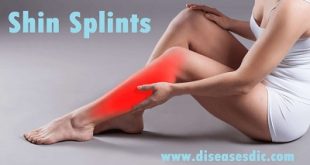Definition
Iliotibial band syndrome (ITBS) is a common knee injury that usually presents with pain and/or tenderness on palpation of the lateral aspect of the knee, superior to the joint line and inferior to the lateral femoral epicondyle. It is considered a non-traumatic overuse injury and is often concomitant with the underlying weakness of hip abductor muscles. Overuse is thought to be caused by repetitive knee flexion and extension movements frequently seen in cyclists and runners.
This repetitive motion causes excessive friction between the lateral femoral epicondyle and the iliotibial tract. Studies have described an ‘impingement zone’ occurring at, or slightly below, 30° of knee flexion during foot strike and the early stance phase of running. During this impingement period in the running cycle, eccentric contraction of the tensor fascia latae muscle and of the gluteus maximus causes the leg to decelerate, generating tension in the iliotibial band.
Anatomy of Iliotibial Band
Epidemiology
- Overall rates of iliotibial band syndrome (ITBS) vary from 2 to 25 percent in physically active individuals; the syndrome has not been reported in those who do not exercise. ITBS is the second most common cause of knee pain due to overuse after patellofemoral dysfunction.
- The problem is most common in runners, military personnel, and cyclists, but has also been described in Nordic skiers, soccer players, and other athletes. Based upon limited observational studies, ITBS affects approximately 1.6 to 12 percent of runners.
- The relative incidence among runners has increased over the past three decades for unknown reasons. Up to 50 percent of cyclists experience knee pain. In one observational study of 254 cyclists over six years, 24 percent of the cyclists presenting to a sports medicine clinic for knee pain were diagnosed with ITBS. Competitive cyclists who are frequently pedaling against high resistance may be at higher risk.
Risk factors of Iliotibial Band Syndrome
Risk factors that increase your risk of getting ITBS to include:
- Certain sports with repetitive motions, such as running and cycling
- Incorrect training technique
- Increasing cycling or running mileage too quickly
- Running up and down hills
- Overtraining
- Using damaged or worn out equipment or footwear
- Wearing improper shoes for a sport or athletic activity
- Athletic equipment that is not properly fit to the user, such as a bicycle
Causes of Iliotibial Band Syndrome
- The ITB glides back and forth over the lateral femoral condyle as the knee bends and straightens. Normally, this isn’t a problem. But the bursa between the lateral femoral condyle and the ITB can become irritated and inflamed if the ITB starts to snap over the condyle with repeated knee motions such as those from walking, running, or biking.
- People often end up with ITB syndrome from overdoing their activity. They try to push themselves too far, too fast, and they end up running, walking, or biking more than their body can handle. The repeated strain causes the bursa on the side of the knee to become inflamed.
- Some experts believe that the problem happens when the knee bows outward. This can happen in runners if their shoes are worn on the outside edge, or if they run on the slanted terrain. Others feel that certain foot abnormalities, such as foot pronation, cause ITB syndrome. (Pronation of the foot occurs when the arch flattens.)
- Recently, health experts have found that runners with a weakened or fatigued gluteus medius muscle in the hip are more likely to end up with ITB syndrome. This muscle controls outward movements of the hip. If the gluteus medius isn’t doing its job, the thigh tends to turn inward. This makes the knee angle into a knock-kneed position. The ITB becomes tightened against the bursa on the side of the knee. This is also called a valgus deformity of the knee.
- People with bowed legs may also be at risk of developing ITB syndrome. The outward angle of the bowed knee makes the lateral femoral condyle more prominent and can make the snapping worse. This condition is called a varus deformity of the knee.
Symptoms
There are varying degrees of severity of ITB Friction Syndrome. The most common symptoms include:
- Sharp or burning pain just above the outer part of the knee
- Pain that worsens with the continuance of running or other repetitive activities
- Swelling over the outside of the knee.
- Pain during early knee bending
- Gradual onset of symptoms which if they persist for greater than 4 weeks can cause major sport or activity interference.
Complications of Iliotibial Band Syndrome
Possible complications of ITBS:
- Prolonged healing time if not appropriately treated or if not given adequate time to heal
- Chronically inflamed tendon and bursa, causing persistent pain with activity that may progress to constant pain
- Recurrence of symptoms if the activity is resumed too soon through overuse, a direct blow, or poor training technique
- Inability to complete training or competition
Diagnosis and test
- Although diagnosing iliotibial band syndrome is not particularly difficult, some practitioners may confuse it with other knee problems. Unsurprisingly, physical therapists that are more exposed to ITBS sufferers tend to be significantly better at identifying it than general medical practitioners.
- Sometimes the condition is miss-diagnosed as a sprain, but usually, sprains are immediate traumatic injuries and should not be confused with ITBS. Mostly, if you are active and experience a non-traumatic lateral knee pain, the chances are it is ITBS.
- ITBS usually occurs when you undertake an unfamiliar exertion when running, walking or hiking, possibly the first major exercise following a resting period. Although the onset can be sudden, it is almost always associated with unusual leg exercise.
- Another indicator is that it hurts more when going downhill or downstairs than when ascending. If the pain is more severe when ascending than when descending it is unlikely to be ITBS.
- Physical examination may include palpation of the painful area to identify tenderness and swelling over the femoral epicondyle.
- You might also be checked for any discrepancy in your leg length, muscle imbalance, and tightness in your legs and back. If there is any doubt, then a complete examination of your lower back, legs, hip, and ankles may be carried out to detect any possible other causes of knee pain.
MRI Scan
- While not usually required, an MRI scan can confirm the condition, particularly if you are uncertain of the cause of your knee pain. At the least, it can confirm that there is no underlying problem such as a tumor or cyst.
- An x-ray, ultrasound or MRI may show injury to your iliotibial band. You may be given contrast liquid to help the iliotibial band show up better in the pictures.
Treatment and medications
Iliotibial Band Syndrome pain can usually recover with some simple changes to activity and exercise. By trying to avoid or reduce the activity which causes the pain, to allow the damaged tissue time to recover and heal.
To help reduce the symptoms an ‘ice pack’ can be placed on the painful area for 15 – 20 minutes, twice a day. Do not place the ‘ice pack’ directly on the skin. Wrap the ‘ice pack’ in a damp towel before placing on the painful area to ensure you do not burn the skin.
During the initial painful stages, it is important to manage the pain.
Painkillers and anti-inflammatory medications: These may be prescribed by your GP if the pain is constant. This is a temporary measure to break the pain cycle but can continue as required.
Exercise: Exercise is important to help stretch the tight tissue. It is important to stretch and strengthen the surrounding muscles and work on your balance to help prevent reoccurrence. Click here for a list of exercises suitable for Iliotibial Band Syndrome
Biomechanical Analysis: If there are significant mechanical problems insoles or specific trainers may improve your leg position and help avoid further injuries. A biomechanical assessment by a Podiatrist or Physiotherapist will determine whether insoles or specific trainers would be of benefit.
Physiotherapy: If exercise alone does not improve symptoms then physiotherapy treatment may be required. A physiotherapist can use specific treatments including, ultrasound, deep friction, massage, interferential, acupuncture or taping to help relieve pain and aid recovery. Click here for more information about Physiotherapy.
Injections: In some cases, your GP or Consultant may recommend an injection. These can be used to reduce inflammation and pain when the symptoms are severe and constant. This is not a ‘cure’ and it is important to follow the exercises and modify activities. A ‘Cortisone Injection’ can help reduce inflammation in the tendon, whilst a ‘PRP Injection’ (Platelet Rich Plasma) can help to stimulate healing.
Surgery: This is not common for Iliotibial band Syndrome. In some cases when symptoms are persistent surgery may be considered.
Prevention of Iliotibial Band Syndrome
Prevention of IT band syndrome (ITBS) or iliotibial band friction syndrome (ITBFS):
- Relax for a few days or decrease your mileage if the pain has occurred on the outer part of your knee is important.
- Before running warm up for a quarter to half a mile.
- Ensure the outside sole of your shoe is not worn out. Replace them if they are.
- Run in the flat part of the road usually the middle. Find roads that are visible well and have little traffic.
- Avoid concrete surface when running.
- Repeatedly change direction on track run.
- See if you need orthotics by scheduling an evaluation with a podiatrist.
 Diseases Treatments Dictionary This is complete solution to read all diseases treatments Which covers Prevention, Causes, Symptoms, Medical Terms, Drugs, Prescription, Natural Remedies with cures and Treatments. Most of the common diseases were listed in names, split with categories.
Diseases Treatments Dictionary This is complete solution to read all diseases treatments Which covers Prevention, Causes, Symptoms, Medical Terms, Drugs, Prescription, Natural Remedies with cures and Treatments. Most of the common diseases were listed in names, split with categories.








I have experienced this kind of pain in my knee but I rested and went to gym to heal it
could be due to dehydration as well?
No.
i have pain in lower part of leg in winter mostly in morning time
Please consult a doctor asap.
Yeah i have a patient who is suffering from cancer (prostate) and he sometimes feels pain, so can i do for him Psyotherapy?.
Please consult a physiotherapist before starting the physiotherapy on your own.
My mom having pain in 2legs joint what treatment should take
Please consult a doctor to get rid of the problem.
I have pain in knee please suggest proper treatment
Please consult an orthopaedist to diagnose your knee joint fluidics for its free movements.
l have the same problem and l visited the hospital but not change they just told me to be applying Diclofenac gel
Please follow physiotherapy.
I have fracture from head tibial. I was on POP for 3months.but when removed ,the xray shows it was not set correctly. pls advise